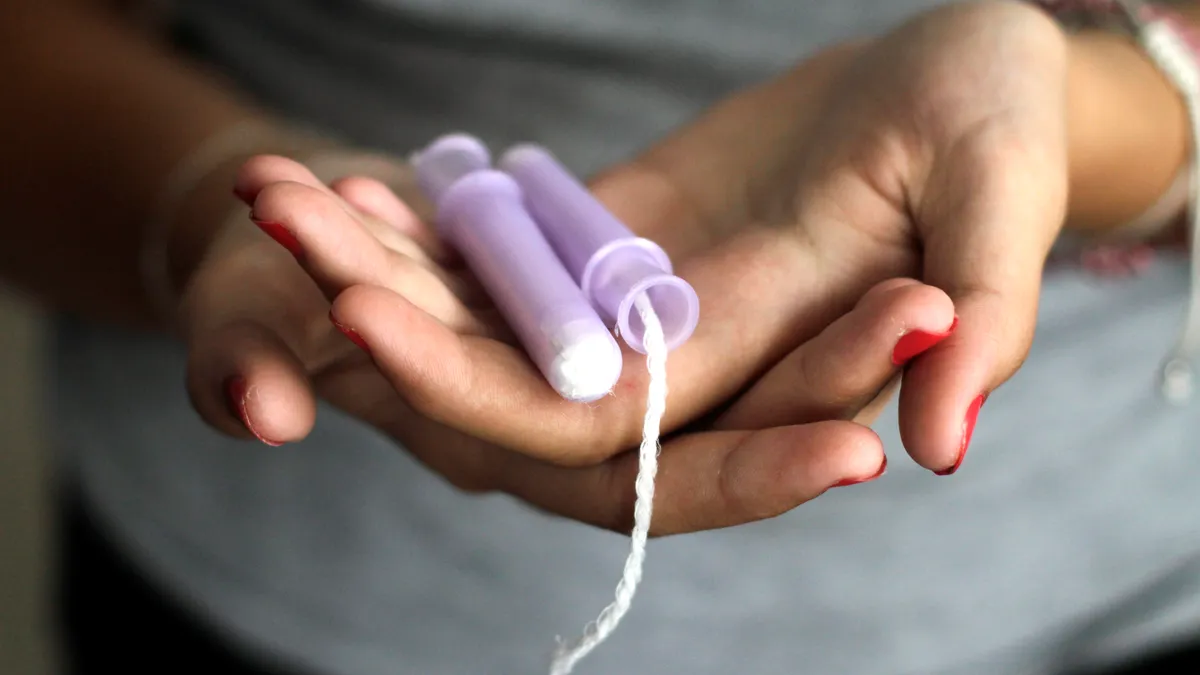Recently women have been getting innovative in managing night-time leaks such as fixing a piece of tissue in-between their butt, layering two pads, and sleeping in limited positions but why go through the fuss when tampons can help you have a night free of worry and clean sheets.
Using tampons can make a difference in your life, so learning how to insert them is necessary.
Tampons are feminine hygiene products inserted into the vagina.
They are made of absorbent materials such as cotton, rayon or cellulose.
Tampons are used to absorb menstrual blood inside the vagina and prevent it from soaking through outer clothes.
Tampons are small, pocket-sized and discreet for girls to carry before or during their periods.
By controlling the blood before it leaves the vagina, tampons are often more comfortable than wearing pads on their underwear.
This makes them a preferred source for active girls or those uncomfortable wearing pads.
Tampons are also convenient when swimming during your period.

Types of tampons
There are several different types of tampons available based on absorbency and applicator.
regular absorbency – For light to medium flow. Made of compressed fibres.
super absorbency – For heavy flow. Made of highly absorbent materials.
applicator tampons – Have an applicator to help insert the tampon. Useful for beginners.
non-applicator tampons – No applicator. More environmentally friendly but can be difficult to insert for beginners.
You don’t need to wear a pantiliner or pad with tampons. If it’s your first time using them, and you’re worried, go ahead and wear a pantiliner just in case.
But picking out the best absorbency for your flow should prevent leaks.
How to use tampons
Wash and dry hands thoroughly before insertion. Stand with one leg up on the toilet seat for easier insertion.
Gently insert the tampon into the vagina at an angle and push it in until the applicator is fully inside. Then slowly pull out the applicator, leaving just the tampon inserted.
Though not all tampons have applicators, your middle finger is there to get the job done. Push the tampon inside your vagina aiming it toward your lower back. Push it in until you reach the base of your finger. You won’t feel the tampon when it’s in the right place. If you do, push it a little further in
Make sure the string is left hanging outside of your body. Yes, the angle may take practice, but you’re golden once you figure it out.
Wash your hands, and you’re done!
Removing a tampon
Remove and change your tampon every 4-6 hours, but you can safely leave a tampon in for up to 8 hours. Using a tampon overnight is fine, but if you are sleeping for more than eight hours, you should use a pad instead.
Remove tampons before any activity that can displace the tampon such as exercise or sex.
When removing a tampon, sit over the toilet and carefully grab the string between two fingers, gently pulling out at the same angle you used to insert it. You may not be able to remove it if you are tense, so relax and pull slowly and steadily.
The best way to know if your tampon needs changing is to give a light tug on the tampon string, if it starts to pull out easily then it’s time to change, if not, it usually means you can leave it a bit longer. Just remember with tampons, 4 hours is about right, and don’t leave one in for more than 8 hours.
Ideally, a tampon should last about 4-6 hours. If you remove a tampon after 6 hours and it still has a lot of “white” showing or it’s uncomfortable because it feels dry, you should go down a size. If you fill or overflow a tampon in less than 4 hours, go up a size.
Since there are 24 hours in a day and you are only supposed to wear a tampon for a max of 8 hours, you would need at least 3 tampons a day during the menstrual cycle, which would be a minimum of 21 tampons per cycle.
Health and Safety
There are some risks associated with using tampons that you should be aware of:
Toxic shock syndrome (TSS) – Rare bacterial infection. Watch for symptoms of sudden high fever, vomiting, diarrhoea, dizziness etc.
Irritation and allergic reaction – Some women may have an allergic reaction to feminine hygiene products. Choose hypoallergenic tampons if needed.
Menstrual cramps – Although tampons may allow for more active lifestyles, they can exacerbate cramps for some women. Using pads may provide more comfort in such cases.
Insertion injury – Rare possibility of puncturing the vaginal wall or cervix. Use proper technique and avoid forceful insertion.
Be sure to always read instructions and product details to ensure safe and effective use. Tampons are a safe option when used properly but risks can be minimized by being well-informed.















